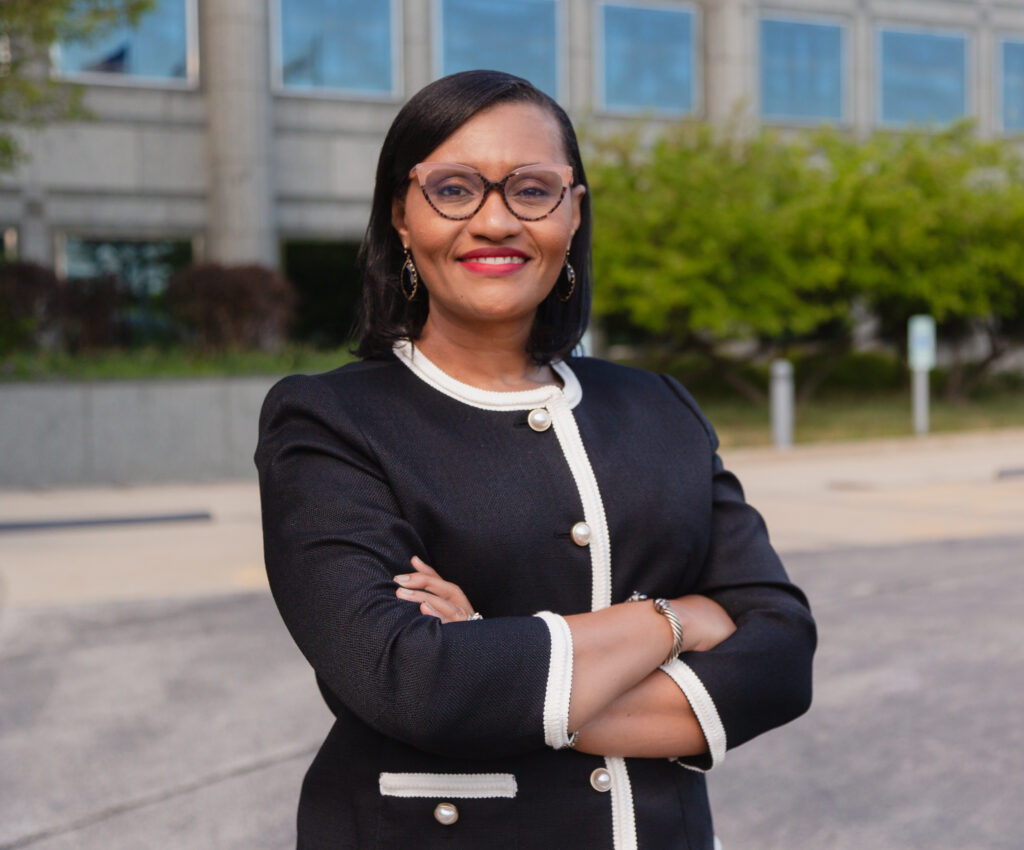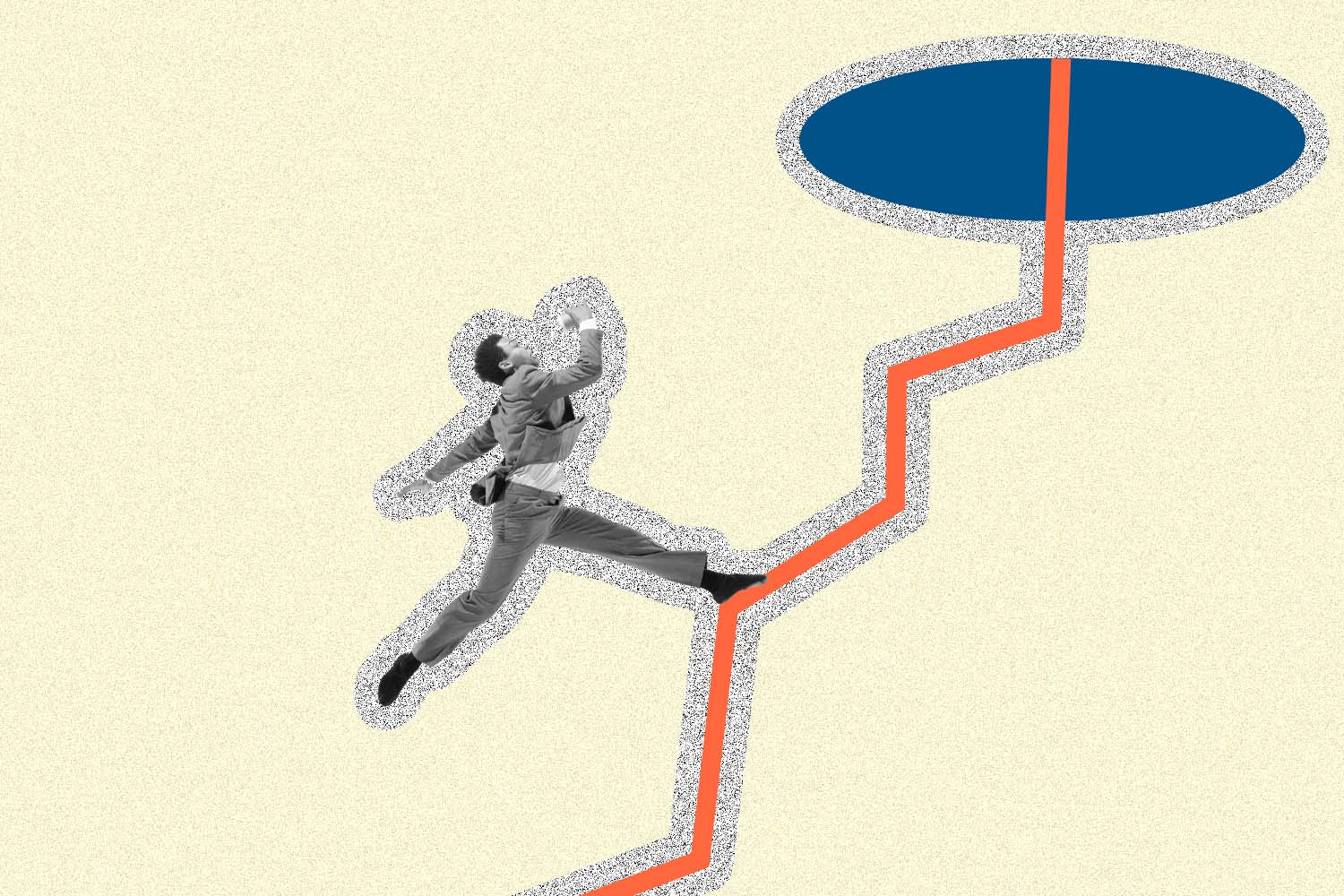As the first chief diversity officer of Discover, Jonita Wilson is working to increase representation for diverse groups of employees. That extends far beyond just race and gender.
“One of the things that I’m super excited about is our approach towards really driving disability inclusion,” Wilson says of the financial services company’s 2022 diversity goals. “If we could get that, then we’re going to move the needle for everybody, because that’s your most vulnerable population.”
The financial services company is participating in the Disability:IN Annual Conference & Expo as a Thought Leadership level sponsor, which includes the sponsorship of 50 NextGen Leaders, who are college students and recent graduates with disabilities who have demonstrated talent and leadership in STEM. “An additional priority for 2022 is to identify critical moments of inclusion for the disability community and design and implement a full suite of support tools for employees, managers and teams,” says Wilson.
Read an edited excerpt from Senior Executive’s interview with Wilson to see how Discover’s approach to disability inclusion, building a hiring pipeline for neurodiverse employees and the company’s DEI focus areas.

It’s not just bringing the talent to the table. But it’s also, how can you help us develop an environment where…they [neurodiverse people] feel like they have a lot more psychological safety?
Jonita Wilson, Chief Diversity Officer of Discover
Senior Executive Media: Could you go into the details of your neuro-awareness program?
Jonita Wilson: We’re in the process of [building] a neurodiverse hiring program. We are partnering with Rangam, a minority-, women- and disability-owned workforce staffing solutions organization to implement our neurodiversity hiring program called Neurodivergent Connections at Discover. SourceAbled is Rangam’s hiring system that uses a consultative approach of best practices, effective training and an end-to-end, tech-enabled hiring platform to attract, hire, onboard, support and retain talent with autism, neurodivergence and disabilities. Utilizing a phase-based approach, Discover has launched the program in business technology with the goal of creating a scalable and sustainable program that will support expansion to other business units.
It’s not just bringing the talent to the table. But it’s also, how can you help us develop an environment where…we’re creating an inclusive environment where they [neuro-diverse people] feel like they have a lot more psychological safety?
Senior Executive: Share the evolution of the DE&I initiatives at your organization.
Jonita Wilson: In 2020, we worked with our executive committee and established four multi-year ambitious spheres that really center on [the following:]
- Increasing diverse group representation.
- Ensuring our talent processes are fair and equitable.
- Fostering an inclusive, engaging work environment.
- And making a strong and external impact in underserved communities.
This deeper commitment led to the creation of our DE&I office back in 2020. At that time, I was appointed to the Chief Diversity Officer role.
Just recently…we released our first diversity, equity and inclusion transparency report, which is titled “Looking Toward a Brighter Future.” That really documents the progress of our company.
Senior Executive Media: What strategies gave you the most bang for your buck when it came to hiring, and retention?
Jonita Wilson: There isn’t just one thing that makes it all come together. There isn’t an exact science or prescription to follow. From an external standpoint, our strategy involves increasing our diverse representation through hiring. We also look internally with regard to promotions and developing individuals so they’re ready for whatever happens to be their next opportunity. We also look at our retention practices and ensure we’re putting things in place that’s going to help retain our talent. Lastly, data is incredibly important to us and helps guide many of our decisions and has helped us do a comprehensive diagnostic review.
In 2020, we needed to create the foundation for our DEI strategy. We worked with an external vendor to conduct a diagnostic to get a baseline for how our culture and inclusion was experienced across various identity groups. The assessment including reviewing our existing survey scores, focus groups, one-on-one interviews and any other previous forms of DE&I groundwork. We reviewed the findings with our Executive Committee. The diagnostic was a combination of quantitative and qualitative insights, so it spoke to the hearts and minds of our leadership. Ultimately, with a few more reviews this allowed us to align on our four aspirational North Star goals and create our company’s first DE&I belief statement.
That really helped us to shape the story and tell the story, but then give us the opportunity to develop a strategic journey, and an intentional roadmap that like effect connects D&I with our strategy. So when we think about our strategy with our customers, with our employees, with our community, it also gave us the opportunity to really look at what systemic barriers exist when we look at our policies or systems practices, and so forth. [For example,] our work in Chatham with a desire to capture more minority suppliers, particularly black suppliers from the local community, caused us to re-evaluate some of our requisition process and how we take bids. It allowed us to understand some of the formal and informal barriers to entry that we hadn’t previously considered. Therefore we opened more dialogue and partnership within the community and attracted more minority suppliers surpassing the City of Chicago’s requirements.
Some of the practices that you think are neutral are equal, they might not be. We have a strong commitment to ensuring our talent processes are netting out fair and equitable results. Since 2018 we have been doing bi-annual pay equity reviews and have taken the appropriate actions. After accounting for factors such as role, tenure, and geography we’ve determined that: women and minorities at Discover earn, on average, between $0.99-$1.03 for every $1.00 earned by men and non-minorities. We know that more systemic changes are necessary and have decided to follow a similar analysis across all of our talent processes. We are establishing equity measurement systems for key points in those talent processes, such as performance management, pay equity, hiring, corrective action and promotions to name a few. Our commitment includes modeling, assessing, problem solving and addressing potential gaps. We are just getting started with our equity measurement system work.






